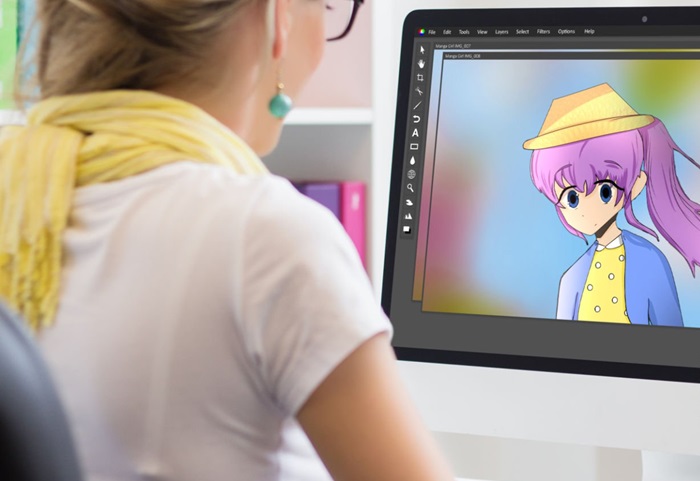|
Listen to article
Getting your Trinity Audio player ready...
|
Hey there, fellow sublimation lover! If you’re anything like me, you’ve probably found yourself on a quest of how to make sublimation brighter. I’ve been experimenting with various techniques, and let me tell you, the journey has been nothing short of thrilling!
In this guide, I’m excited to share my personal experiences and the easy techniques that have worked wonders for me in making my sublimation prints brighter and more vibrant. So, buckle up for a creative ride as I walk you through the simple yet effective methods I’ve discovered. Get ready to elevate your sublimation game and make those prints truly unforgettable! Let’s go in together and unlock the brilliance within your sublimation creations.
Contents
- 1 What might be the cause of the faded appearance in my sublimation prints?
- 2 How to make sublimation brighter
- 3 Conclusion
What might be the cause of the faded appearance in my sublimation prints?
Alright, if your sublimation prints appear faded, several factors could be contributing to this issue. I’ve been there – It’s frustrating, right? But fear not, because I’ve navigated through these sublimation mishaps, and I’m here to share my experiences to help you avoid the faded print blues.
First things first, let’s talk about temperature and time. My prints quickly improved when I realized I was playing it fast and loose with these settings. Too low a temperature or too little pressing time can seriously mess with the color transfer. So, check those guidelines and stick to them religiously.

Next up, is the sublimation paper – turns out, that not all papers are created equal. Investing in a good-quality sublimation paper specific to my printer made a world of difference. No more faded disappointments!
Now, let’s talk about the canvas for our art – the layer. If you’re sublimating onto the wrong material or one without a polymer coating, you’re asking for faded trouble. Make sure your layer is sublimation-friendly and coated correctly.
Pressure matters, too. Uneven pressure on the heat press can leave you with uneven colors. So, double-check that your press is distributing that pressure evenly.
And oh, those color profiles and printer settings! It’s like the secret sauce. Adjust them according to the sublimation gods – your graphic design software and printer settings should match the sublimation specs for optimal results.
I also learned that ink saturation is a real thing. Running low on sublimation ink? Well, that’s a surefire way to get those faded vibes. Keep those cartridges topped up!
Environmental conditions played their part too. Sublimation doesn’t like extreme humidity levels, so find that sweet spot for a consistent printing environment.
Lastly, if your prints are fading after a wash, it’s probably time to reconsider your detergent game. Sublimation-friendly detergents can be a game-changer.
So, by tackling these issues head-on, I’ve managed to turn those disappointments into vibrant victories.
How to make sublimation brighter
To achieve vibrant sublimation prints, it’s not just about having the right equipment and supplies; you need to pay attention to factors like sublimation time, temperature, and pressure. Enhancing the brightness of sublimation prints involves attention to various factors. Drawing from personal experience, here’s a detailed guide:
Temperature and Time Settings:
Experience: Invest time in calibrating your heat press accurately. In my case, achieving the right temperature and pressing time was a game-changer.
Detailed Solution: Regularly check and calibrate your heat press based on the specifications provided by your sublimation paper and ink manufacturers. Conduct test prints to ensure optimal results. Fine-tuning these settings enhances color vibrancy without risking overheating.
Quality Sublimation Paper:
Experience: Upgrading to premium sublimation paper significantly improved color transfer and saturation in my prints.
Detailed Solution: Research and invest in sublimation paper known for its high ink absorption and color retention. Opt for paper compatible with your printer model. A thicker paper with a superior coating often yields more vibrant results. Experiment with different brands to find the one that suits your needs best.

Substrate Considerations:
Experience: Sublimating onto a substrate with a proper polymer coating made a substantial impact on color vibrancy.
Detailed Solution: Ensure your chosen substrates are specifically designed for sublimation. Look for materials with a polymer coating that facilitates better ink absorption. Different substrates may require slight adjustments in temperature and pressure, so conduct tests to find the optimal settings for each.
Even Pressure Distribution:
Experience: Uneven pressure led to inconsistencies in color transfer, particularly along the edges of my prints.
Detailed Solution: Regularly check and adjust the pressure settings on your heat press. Use pressure equalization tools if necessary to ensure uniform pressure across the entire substrate. This step is critical for preventing faded areas and achieving consistent color saturation.
Optimized Color Profiles and Settings:
Experience: Mismatched color profiles between software and printer settings resulted in inaccurate colors.
Detailed Solution: Regularly calibrate your monitor to ensure accurate color representation in your design software. Adjust printer settings to match the color profiles recommended for sublimation. Conduct test prints and make incremental adjustments until colors align accurately between your design and the final output.
Monitor Ink Levels:
Experience: Faded prints were often a result of overlooking ink levels in my sublimation cartridges.
Detailed Solution: Keep a close eye on ink levels, and establish a routine for checking and refilling cartridges. Many printers allow monitoring of ink levels through software. Refill cartridges before they reach critically low levels to maintain consistent color saturation throughout the printing process.
Environmental Conditions:
Experience: Inconsistencies in print quality due to fluctuating humidity levels prompted me to control the printing environment.
Detailed Solution: Invest in a dehumidifier or control the printing environment to maintain optimal humidity levels. Sublimation performs best in stable conditions, so minimizing environmental variables ensures predictable and vibrant results. Monitor and adjust humidity levels as needed, especially during seasons with extreme weather conditions.
Post-Printing Care:
Experience: Prints faded more quickly after washing when using standard detergents.
Detailed Solution: Use detergents specifically designed for sublimation prints. These detergents are formulated to preserve colors and prevent fading. Additionally, educate end-users on proper washing and care instructions to maximize the lifespan and vibrancy of sublimated items. This includes recommending gentle washing, avoiding bleach, and using cold water.
By implementing these detailed solutions, you’ll not only address the issues that contribute to faded sublimation prints but also optimize your entire printing process for consistently vibrant and eye-catching results.
How to make sublimation brighter on mugs and tumblers?
For brighter sublimation prints on mugs and tumblers, use quality blanks, clean thoroughly, and follow precise guidelines. Pay attention to compatible sublimation paper, accurate image placement, and consistent pressure during the sublimation process. Allow for proper cooling post-printing. I’ve seen noticeable improvements in brightness by choosing quality blanks and adhering to these simple steps. It makes the sublimation process on mugs and tumblers both efficient and vibrant.

What are the challenges encountered in improving the brightness of sublimation prints?
The challenges faced in enhancing the brightness of sublimation prints include:
- Moisture Issues: Sublimation is sensitive to moisture, and excessive humidity can affect the transfer process, leading to less vibrant prints.
- Ink Shortages or Banding: Insufficient sublimation ink or issues like banding during the printing process can result in uneven color distribution and reduced brightness.
- Ghosting and Gassing Out: Ghosting refers to faint secondary images, and gassing out involves the release of unwanted gases during sublimation. Both can impact the clarity and vibrancy of the final print.
- Transfer Lines on Garments: Occasionally, sublimation prints may exhibit visible transfer lines on the garment, affecting the overall appearance and brightness.
- Color Discrepancies: Differences between the expected input colors in the design and the actual output colors in the sublimation print can pose a challenge, impacting the intended brightness of the final product.
Conclusion
In my journey to search the question of how to make sublimation brighter, I’ve discovered that it’s more than just a technical process—it’s an art that involves mastering some easy techniques. Embracing the right temperature, time, and pressure settings has been a game-changer, giving life to my designs with vibrant colors. Following the guidelines provided by manufacturers has become my compass, ensuring that every print is a burst of brilliance.



6 comments